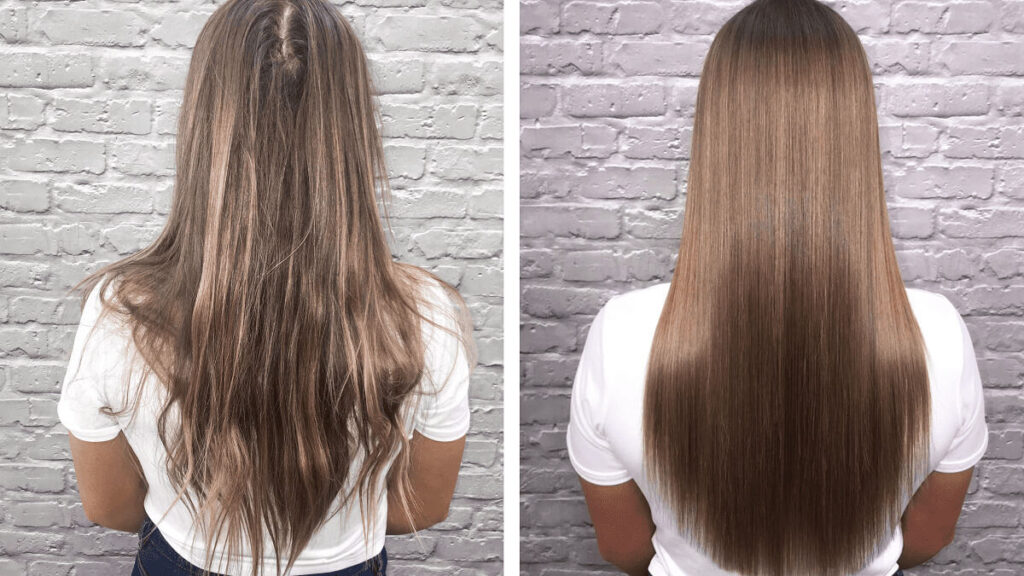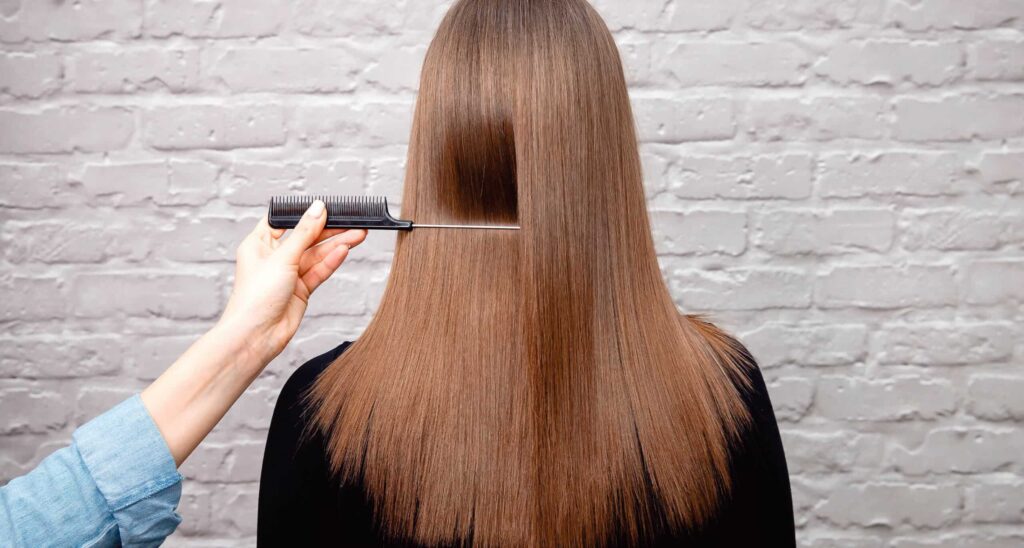Curious about keratin treatments? You’re not alone. As the quest for smooth, manageable hair continues, more and more people are turning to keratin treatments as a solution. But before you book that salon appointment, you must arm yourself with knowledge. Our blog, ‘Everything You Should Know Before Getting Keratin Hair Treatment,’ is your ultimate guide to navigating the world of keratin. So, whether you’re a keratin newbie or a seasoned veteran, join us as we uncover everything you need to know before taking the plunge into silky-smooth locks.
I. What is a Keratin Treatment?

A Keratin Treatment is a semi-permanent hair straightening and smoothing technique that involves applying a keratin-based solution to the hair, followed by heat treatment to lock in the formula. Keratin, a protein naturally found in hair, is replenished during this process to repair damage, reduce frizz, and straighten the hair. This process seals your hair’s cuticle, to prevent the movement of moisture in and out of your strands. Your stylist will rough-dry your hair, then finish it with a flat iron, to seal and activate the coating.
II. Benefits of Keratin Hair Treatment
From taming unruly curls to enhancing shine and strength, keratin treatments offer a semi-permanent solution to your hair woes. Let’s explore the benefits of keratin treatments!
1. Smooth and Straight Hair:

The primary benefit of a keratin treatment is smoother, straighter hair. Keratin smooths cells that overlap to form hair strands, which means more manageable hair and less frizz. It helps to relax curls and make the hair more manageable. Keratin can also reduce the look of split ends by temporarily bonding the hair back together. This makes for hair that dries with little frizz and has a glossy, healthy look.
2. Keratin Treatment Improved Manageability:
Keratin-treated hair is easier to style and requires less time and effort for daily maintenance. A keratin restorative therapy treatment helps fix high porosity by nourishing the hair with essential nutrients and smoothes your strands on the outside which makes brushing and detangling easier, resulting in less breakage and damage.
3. Makes Your Hair Shiny and Glossy:

The treatment can enhance the shine and luster of the hair, giving it a healthier appearance. It’s a great way to flatten out the cuticle and when your cuticles are flat and smooth, your hair reflects light. It gleams, illuminates, and glistens with pure radiance which in turn makes the hair feel and look healthier and shinier.
4. Hair Strengthening:
Keratin is a protein that strengthens hair strands, reducing breakage and damage. Keratin makes up 91 percent of hair and contains 16 different amino acids, with cysteine being the most important one as it creates the sulfur bridges in hair that give it its internal strength. Together, these ingredients can help repair and fortify hair that has been damaged by heat styling, chemical treatments, or environmental factors.
→ While results vary depending on individual hair type and maintenance routine, this treatment usually takes about 1-3 hours and typically lasts at least 3-4 months, providing semi-permanent benefits (A keratin treatment is different from hair relaxing, or chemical straightening, which lasts until your hair grows out.).
III. Who Should Get The Keratin Treatment?

Keratin treatments are suitable for various hair types, including curly, wavy, and straight hair. They can be customized to achieve different levels of straightness and smoothness, depending on the client’s preferences. However, due to the effectively reduced frizz, even in humid conditions, this is particularly beneficial for individuals with naturally curly or frizzy hair who desire smoother, straighter hair without daily styling efforts. Keratin treatments can be very effective if you have coarse or unruly strands.
IV. Are Keratin Treatment Harm For Your Hair?
Unlike other chemical relaxers that make your hair poker straight and stiff, and even more damaged, a keratin straightening treatment makes your hair straight with natural movement, elasticity, and true health. However, as with any treatment involving strong chemicals and high heat, there are risks involved to your hair.
1. Keratin Treatments and Formaldehyde
Many (but not all) keratin treatments contain formaldehyde. While they do not contain formaldehyde (because formaldehyde is a gas), many contain ingredients that release formaldehyde when they are heated or mixed with water. Examples include methylene glycol, methanediol, methanal and formalin. These chemicals are extremely effective sealers – they are the ingredients that keep your hair smooth and frizz-free.

However, formaldehyde is a known irritant and carcinogen, so we urge you to be cautious. Some keratin treatments on the market are formaldehyde-free, but they tend to be less powerful and long-lasting. We recommend you do your research, as well as talk to your stylist, before deciding on which keratin treatment might be right for you.
2. Damaged Hair

The high heat and strong chemicals used in keratin treatments risk making your hair dry, brittle, and prone to breakage. People with fine hair and/or already processed hair should be especially wary, since their more delicate strands may not be able to withstand the treatment without breaking.
3. Hard to Maintain
Washing your hair less and avoiding swimming might make it harder to maintain for some people.
- The type of water on your hair matters: Swimming in chlorinated or salt water (basically a pool or an ocean) can shorten the life of your keratin treatment. You’ll also need to invest in shampoo and conditioner that are free of sodium chloride and sulfates, as these can both strip the treatments.
- Wait to wash: You’ll have to wait 3 to 4 days post-keratin treatment to get your hair wet, so if you’re not a person who likes skipping wash day, then this treatment may not be right for you, and some people report a musty smell even after washing.
- Not recommended for all: It’s also not recommended for pregnant women.
V. Conclusion
In conclusion, while keratin treatment offers numerous benefits such as smoother, more manageable hair, it’s crucial to approach it with caution and a full understanding of the process and its potential side effects. Prioritize consultation with a trusted stylist, discuss your hair type, and weigh the pros and cons before making a decision. Ultimately, whether keratin treatment is right for you depends on your individual needs, lifestyle, and willingness to commit to the necessary upkeep. By being well-informed and taking necessary precautions, you can make the most of this popular hair treatment while safeguarding the health and integrity of your locks.


 BEST SELLING PRODUCTS
BEST SELLING PRODUCTS Wig Hair
Wig Hair WHOLESALE
WHOLESALE Contact us
Contact us Sale Events
Sale Events
